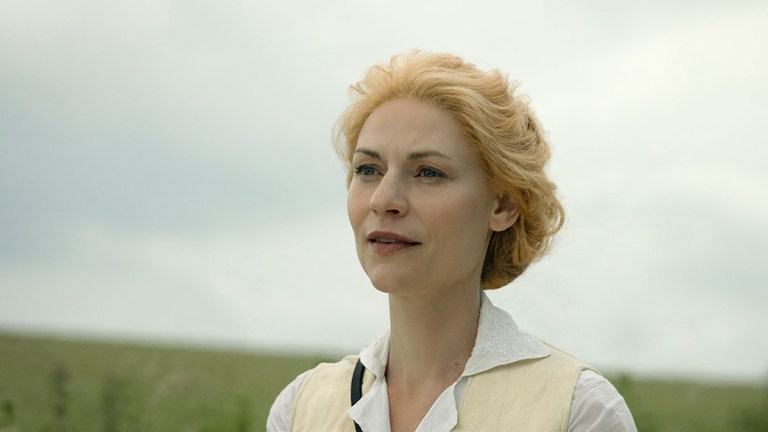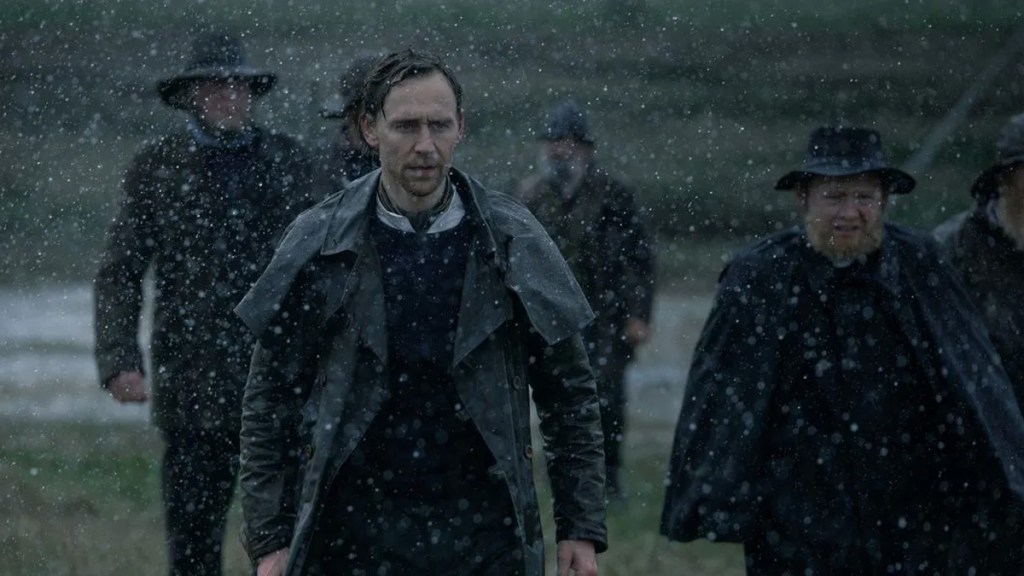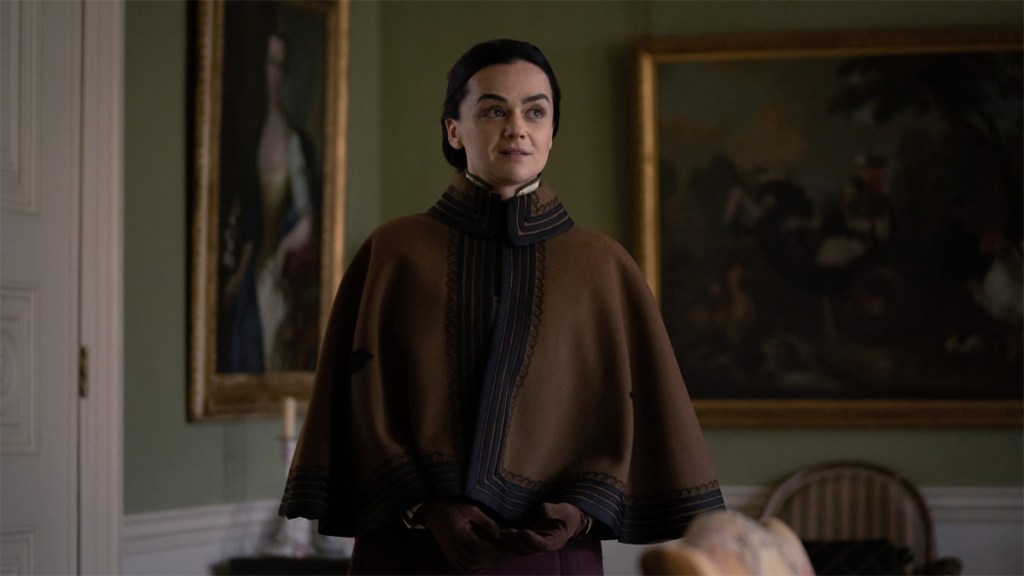The Essex Serpent TV Ending Swaps Ambiguity For Resolution
Apple TV+’s adaptation of The Essex Serpent makes some key changes to give Sarah Perry’s original story a more definite ending. Spoilers.

Warning: contains spoilers for The Essex Serpent TV adaptation and novel.
The pendulum swings of fate in most stories mean that whether they have a happy ending depends on where the storyteller chooses to stop. Quit while things are ahead, that’s happy; keep going until it swings back the other way, less so. The Apple TV+ version of Sarah Perry’s 2016 novel The Essex Serpent chooses to keep going past the deliberately ambiguous end of Perry’s story until it reaches the happy ending the novelist avoided.
It’s an understandable move; the six-episode TV adaptation foregrounds the romantic plot between Cora and Will (Claire Danes and Tom Hiddleston) and so generously gives that story a definite ending. The novel encompasses a broader spectrum, and as it chiefly revolves around themes of ambiguity and doubt (is there really a biblical serpent praying on Essex villagers? How do faith, superstition, science and rationality play into that question?), it characteristically leaves readers in a less secure place.
Was the Serpent Real?

If readers and viewers don’t wish to believe in the mystical serpent, the ending of both versions means they don’t have to. The novel and the TV adaptation offer rational explanations for the beast’s various sightings and encounters. In both versions, a huge dead fish washes up on the shores of the Blackwater, suggesting to the villagers that their ‘serpent’ was simply a lost creature from another clime, its migratory route perhaps disrupted – as Cora theorises to Frankie – by the recent earthquake. In the book, Cora and Frankie don’t witness the huge dead fish first-hand because they’re back in London, but Cora reads about it in letters from Aldwinter.
There’s also another ‘serpent’ explanation in the novel in the form of Naomi’s father’s missing rowing boat ‘Gracie’, which had come adrift and is discovered by Naomi and Joanna with its barnacled prow mistaken for the floating bulk of the beast.
In each version of the story then, rational explanations are given for the serpent sightings, and for the TV adaptation’s underwater point of view shots from the beast’s perspective. So, there was no serpent. It was a fish, it was a boat, it was the fevered imaginations of a community fearing the devil and judgement for their sins… Unless of course, you wish to believe otherwise, a choice for which the book, which lives more happily alongside ambiguity, allows.
Does Stella Die in the Book?

It’s inside missing rowboat Gracie that Stella Ransome prepares her funereal bed, decorated with the blue “treasures” the colour of which she’s become obsessed with in her illness. Aided by Frankie, she drifts out on the Blackwater to meet the serpent, intending to “make peace with it” and sacrifice herself to pay Aldwinter’s debts and send it away. In the TV adaptation, Clémence Poésy beautifully conveys Stella’s addled euphoria as she enacts her ritual and thinks she sees the serpent before being rescued by Will.
In the TV finale, we see Will pick a blue love-in-a-mist flower from the rectory garden and bring it up to Stella in her bed. Silently, he holds her and weeps and from this we understand that she has died. Later, we see Will reading aloud to his young son from Charles Kingsley’s The Water Babies. The passage (“If Mr Garth does not find a fox in Eversley wood – as folks sometimes fear he never will – that does not prove there are no such things as foxes”) is significant to the story’s central questions of belief and proof. We understand that Will is now a widower and six months after Stella’s death, see him going to meet Cora as she walks home from her archaeological dig. They embrace, Cora asks Will “Shall we walk?” and they continue on together, united in love.
At the end of the novel however, Stella is still alive and apparently in recovery from her illness. She is strong enough to take walks and a visiting doctor comments that it’s just a question of managing her condition now. Cora still writes the same letter to Will, saying that she is torn and mended, that she wants everything and needs nothing, that she loves him and is content without him. Her letter – and the novel – end: “Even so, come quickly! Cora Seaborne.” With Will’s beloved wife Stella still alive, the Cora/Will romance is left in a more complicated place in the book, even if readers may long for the continuation that the TV series provides, and see it as inevitable.
Other Differences: Naomi, Martha, Edward Burton, Luke Garrett

Some of the story’s secondary plots are also resolved differently on screen, though with no betrayal of the novel’s meaning. No doubt to streamline matters, Luke Garrett (Frank Dillane) wasn’t stabbed in the hand by a would-be mugger, but in a revenge attack by a man who’d tried to kill Edward Burton – a patient Luke saved by successfully operating on his heart. In the TV show, Luke saves the life of a factory worker injured in a workplace blast, and Edward Burton doesn’t feature.
In the novel, after Martha (Hayley Squires) turns down Spencer (Jamael Westman) romantically, she chooses to make her life with Edward Burton (“half wife and half-conspirator”, as Cora describes her relationship in a letter to Will), despite still longing for Cora. Spencer still uses his vast fortune to become a responsible landlord and to improve living conditions for the poor, but does so anonymously. Spencer and Luke end the novel living together.
Naomi’s disappearance too, is streamlined. In the TV series, she runs away fearing herself a sinner, and hides in old man Cracknell’s remote house, now derelict after his death. She re-emerges when the fish washes up on the Blackwater shore, convinced that the serpent is now dead, and returns to her father. In the novel, she runs away to a nearby town, disguises herself as a boy for safety and works with a local beggar until Joanna Ransome recognises her and she comes home.
The major difference from adaptor Anna Symon remains that final happy ending scene between Cora and Will. Symon chooses to stop The Essex Serpent’s pendulum in a different place to the novel, not in a place of complexity and longing, but in one of happiness and resolution. It moves the story forward in time (the novel ends just two months after Stella’s rowboat ritual) and is kinder and more generous to its lead character by giving Cora a place working happily on a paleontology excavation, and by giving her a Stella-less Will.
The Essex Serpent is available to stream now on Apple TV+
